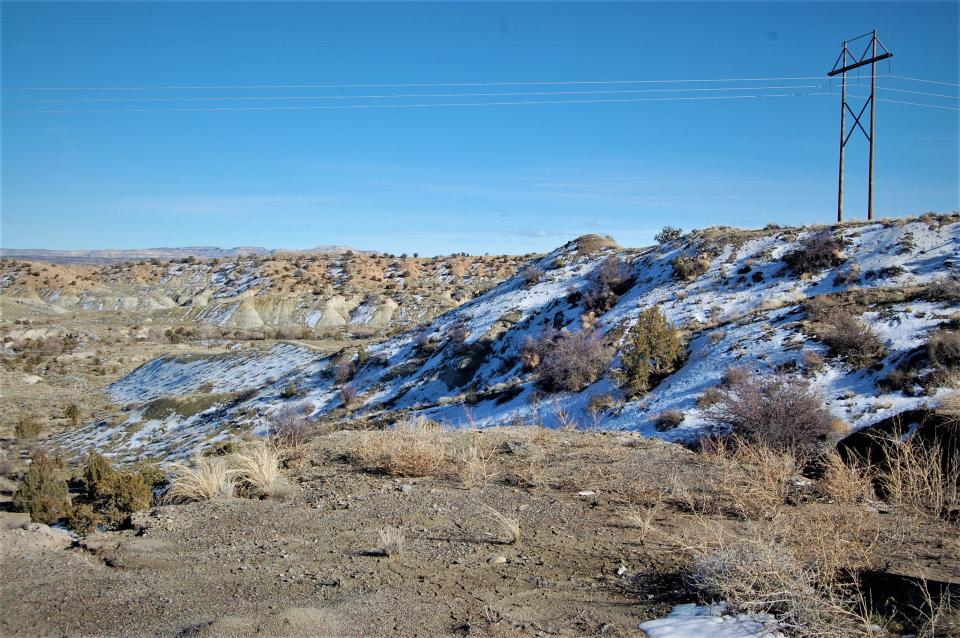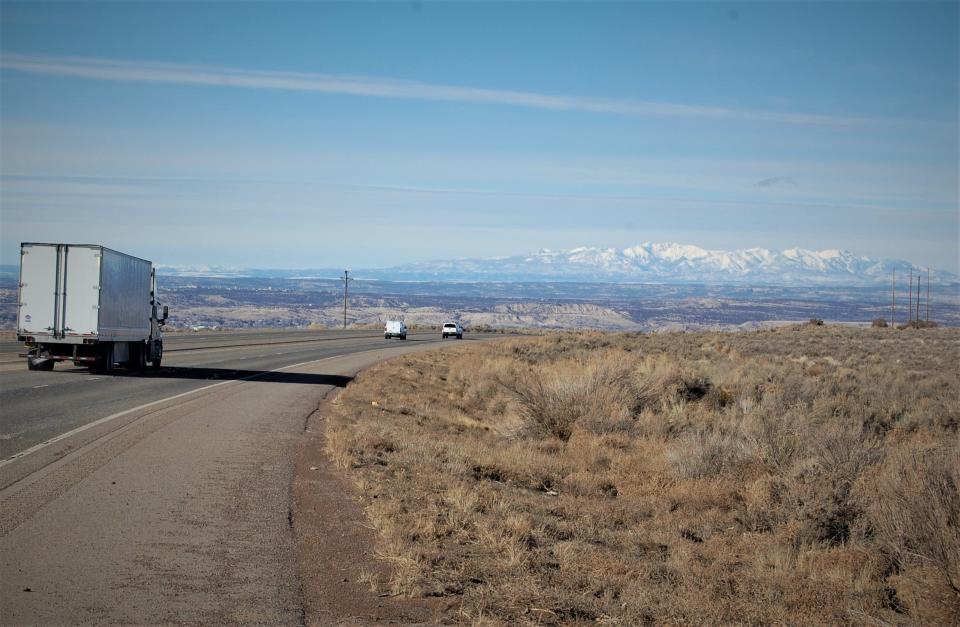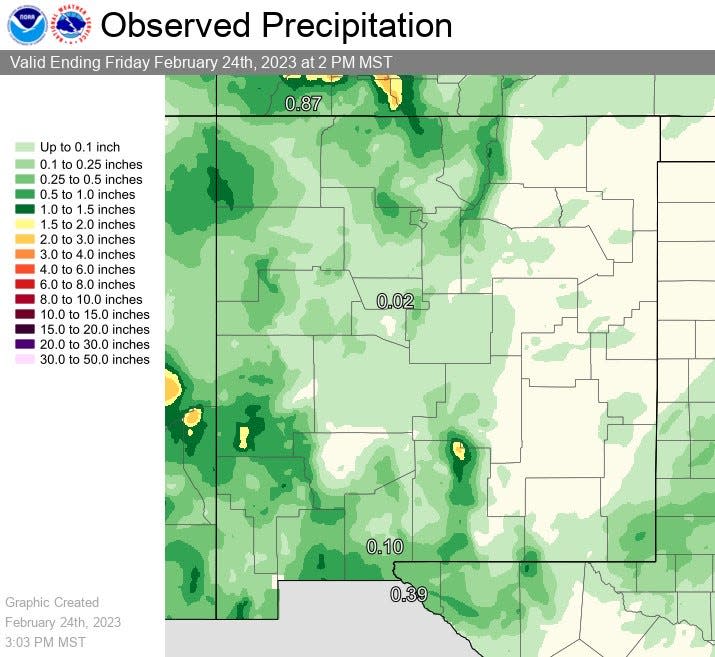February storms bring rapid improvement to San Juan County's drought status
FARMINGTON — A series of winter storms that moved through the Four Corners area between Feb. 13 and Feb. 23 didn’t yield an abundance of moisture, but it was enough to officially pry a significant portion of the county out of the grip of a years-long drought.
According to figures provided by the Albuquerque office of the National Weather Service, 0.72 inches of precipitation was recorded at the Four Corners Regional Airport over that period. That may not sound like a lot, but those storms left much of western San Juan County — where moisture totals were significantly higher — free of any drought designation.
That marked the first time since July 2019 that some part of San Juan County was not characterized as being in a drought or abnormally dry, according to the U.S. Drought Monitor.
The latest update to the map, which was posted on Feb. 21, shows that nearly 39% of San Juan County — a patch of territory that runs along the entire western border and much of the northern border — is at normal moisture, representing a dramatic increase from the previous iteration. On Feb. 14, only 6% of the county had carried that designation.

It was an even greater improvement over three months ago, when the entirety of San Juan County was still characterized as being abnormally dry or in some form of drought.
On Feb. 21, approximately 31% of the county was characterized as being abnormally dry, while 22% was in moderate drought. The remaining 8% of the county was in severe drought, but even those categories are at the lighter end of the U.S. Drought Monitor scale. No parts of the county were in extreme or exceptional drought, the two driest categories. The map shows that the driest parts of the county are in the southeast corner.

David Craft, a meteorologist with the National Weather Service in Albuquerque, said the 0.72 inches of moisture recorded at the airport by Feb. 24 had brought Farmington’s year-to-date total to 1.93 inches. The normal total for the airport at the end of February is 1.18 inches, he said, meaning the city already was far ahead of that mark with a few days to go in the month.
He laughed as he added Farmington’s daily precipitation reports from February to come up with a total.
“It’s nice that we need a calculator for it,” he said. “Sometimes, we don’t.”
The status of the drought map isn’t the only positive data drought-watchers in the Four Corners region can look to these days. The SNOTEL map maintained by the U.S. Department of Agriculture shows that the snow-water equivalent for the San Miguel, Dolores, Animas and San Juan rivers in the mountains of southwest Colorado was at 140% of normal on Feb. 23 – the leading figure for all of Colorado. Before the recent storms, that figure was much closer to 120%.

But perhaps the best news is coming from the eastern equatorial Pacific Ocean, Craft said, where all signs continue to point toward the imminent collapse of La Niña conditions, which have left much of the southwestern United States drier and warmer than normal for the last three winters. Craft said subsurface temperatures are still cooler than normal in that part of the ocean, but they are trending in the right direction for the phenomenon to come to an end within the next month.
“We can see in our own experience the weather pattern has changed,” he said.
The collapse of La Niña conditions does not guarantee that the Southwest will receive the late-winter, early-spring snow that used to fall here with regularity, but it does increase the chances that will happen, Craft said.
Even the short-term forecast for San Juan County brings the possibility of more precipitation, he said, noting that there is a 33% chance of above-normal moisture for Farmington over the next several days, while there is a 70% chance of below-normal temperatures.
Mike Easterling can be reached at 505-564-4610 or measterling@daily-times.com. Support local journalism with a digital subscription: http://bit.ly/2I6TU0e.
This article originally appeared on Farmington Daily Times: Nearly half of San Juan County free from drought status after storms

